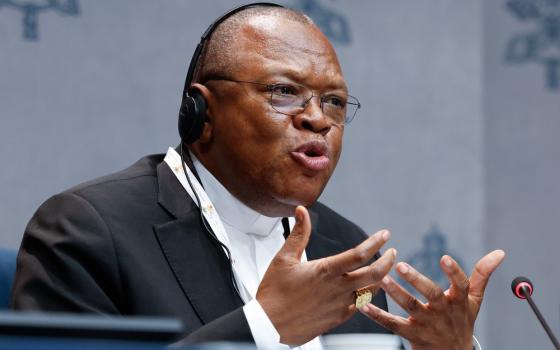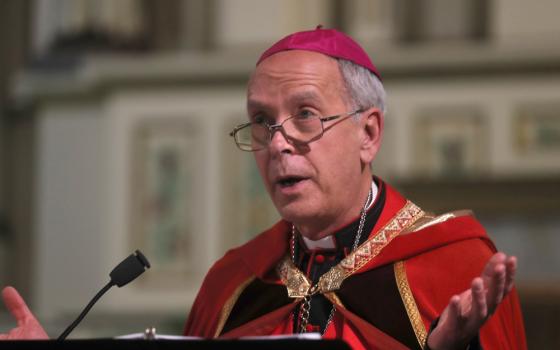“If it bleeds, it leads.” This is the journalist’s mantra. We can add to that another adage: “If it’s celibate, it sells.”
On the March 19 edition of CBS’s “Early Show,” correspondent Allen Pizzey described the allegations of the sexual abuse of minors by Catholic clergy as “a plague of biblical proportions.”
That’s their story, and they’re sticking to it. But what is, in fact, the real story in the American church? We know the story of sin, scandal and shame. What is the story today? It might be helpful to begin by asking what we already know, or think we know.
If I asked you to name the largest childhood sexual abuse judgment for a single victim against a religious institution in American history, which Catholic order or diocese would you name? Dallas? Boston? The Oregon Jesuits? Los Angeles?
The answer? A $105 million verdict in the case of a single claimant was imposed on the Porter-Gaud School in Charleston, S.C., a school founded and run by the Episcopal church.
Perhaps you are unaware of the Porter-Gaud case because, according to the Cymfony media analysis of the Catholic church’s sexual abuse scandal, in 2001 and 2002, only 22 stories about the case were published in the six months after the verdict in South Carolina. Compare that to the 271 stories published during a similar time period about a large judgment against the Catholic diocese of Dallas.
Did you know that over 500 childhood sexual abuse claims were filed against the Hare Krishnas, claims that resulted in the eight Hare Krishna bankruptcies in 2004?
Probably not, because Hare Krishnas and Episcopalians don’t summon the same rich associations as Roman Catholic clergy. Would you buy tickets to a movie featuring a murdering, self-flagellating, albino Episcopal rector? Me neither.
David Liberman, the lawyer for the Hare Krishnas, talked about the advantages of press neglect. He said, “Relative to the coverage of the Catholic abuse scandal, there has been little coverage of the Krishna Consciousness sex abuse scandal. As a result, few people outside the leadership of the Hare Krishna movement are even aware of the claims I have described here or of the Krishna Consciousness bankruptcy.”
Did you know that, according to the study conducted by the John Jay College of Criminal Justice, the number of allegations of childhood sexual abuse by Catholic clergy was just over 50 for 1992? That number declined to around 25 for 2002. According to the Gavin Group Audit the number of allegations stood at 13 for 2008. That’s for a church serving 70 million Americans.
In January of this year the U.S. Department of Justice issued a study on sexual victimization in the nation’s juvenile facilities for the year 2008. They report that an estimated 10.3 percent of youth in state and large non-state facilities report experiencing one or more incidents of sexual abuse involving facility staff annually. That’s 2,730 young men and women, and 1,150 of them report sexual contact with facility staff as the result of the use of force.
I understand that this story does not fit into a 30-second sound bite. Any journalist interested in the facts of childhood sexual abuse in 2010 has to plow through lots of dry research and pie charts. Neither the “Bureau of Justice Statistics Special Report: Sexual Victimization in Juvenile Facilities Reported by Youth, 2008-2009” nor the U.S. bishops’ “Charter for the Protection of Children and Young People” is light or enjoyable reading. I don’t recommend it, unless you want to understand how the church has addressed the problem of childhood sexual abuse, while other organizations have failed to do so. Unless you want to know how the number of allegations of sexual abuse by Catholic clergy has gone steadily and dramatically down since 1992. Unless you want to know where the problem still festers and grows.
If a fire is out in one house but still raging in the house down the block, firefighters and reporters need to focus their equipment and skills on the present emergency. We need to give up the easy story line in favor of the hard facts.
[Melissa Musick Nussbaum is a writer, speaker on church and liturgy, and coauthor, with Jana Bennett, of Free to Stay, Free to Leave: Fruits of the Spirit and Church Choice.]


